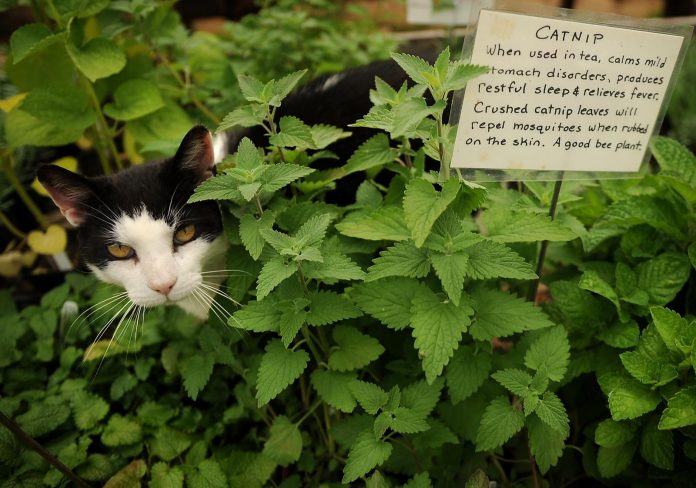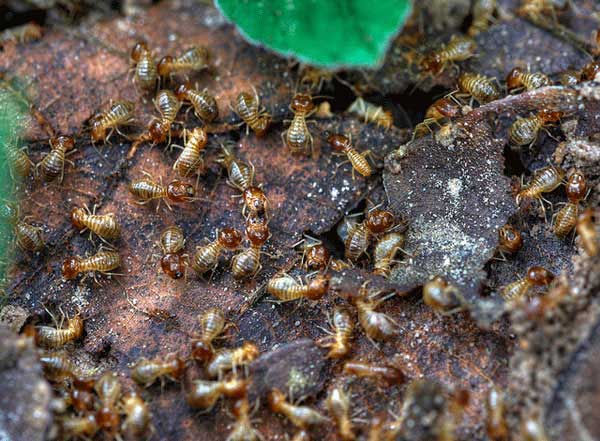No one likes to be bugged; at least, no one that I know likes to be. And we live in a world where we are surrounded by bugs; billions of insects that only try to live their lives and manage to annoy us in the process. Possibly, they aren’t disturbed in the least by having us around, but they do definitely annoy us.
We are currently so bugged by bugs, that one billion pounds of pesticides are used every year in the United States. While most of that is being used on farms and for other industrial purposes, there is still a decent amount being used in the homes of people; either to keep pests out of the garden, to destroy them in the house, or simply to prevent them from threatening us.
Surely, this daily exposure to toxic pesticides isn’t healthy for us. There seems to be a steady stream of news stories coming out, from all parts of the political spectrum, talking about pesticides’ health threats to both us humans and our animal kingdom friends. There has also been substantial evidence linking with the declining bee populations with chemicals that shouldn’t even affect them.
Although you and I cannot do much about the pesticides and other chemicals that are used in modern industrialized agriculture, we can do something about the chemicals that are used in our homes. There really is no reason why we should keep adding to what is everyday killing us, if there are natural alternatives available that are not harmful.
Protecting Yourself and Your Garden from Bugs
In this respect, a number of plants are useful; 55 of them that I was able to locate. These plants, most of which are aromatic, have the power to keep us away from bug, so they don’t bug us. Not all plants work for all kinds of bugs but planting a number of these plants around our homes will do a lot to make sure we live a life as bug-free as possible.
- Alliums – This group includes a variety of onion-like plants, including: chives, leeks, onions, garlic, scallions, and shallots. These are an excellent addition to any vegetable garden, not only because you can eat them, but also because they will help protect your garden from slugs, flies and worms. However, there is a chance that they will attract moths, so if that’s a problem, don’t use them. They can be particularly poisonous to dogs and cats, too.
- Basil – Basil is one of the main ingredients in Italian Seasoning, as well as being a herb used widely in cooking. It is also useful for keeping mosquitoes away.
- Catnip – If you have cats, you may want to be vigilant about this one; but catnip repels mosquitoes much more than DEET, the most widely used chemical in insect repellants. A few leaves can be crushed and rubbed on your skin to keep mosquitoes away; but you may draw every cat in the neighborhood. Be careful to plant catnip as it spreads, it’s easier for you to pot it and put the pots in your yard, rather than for it to take over from other plants.
- Chrysanthemums – The chrysanthemum flower releases a compound called pyrerthrins, which is used in many commercially produced insect repellents. Nice to keep mosquitoes, roaches, bugs, ticks and silverfish away.
- Garlic – Garlic is an amazing plant, usable as an antibiotic, antiviral and antifungal. It’s also a pretty good repellent for blood-sucking vampires… I mean mosquitoes.
- Lavender – Nearly all species, except the bees, should avoid lavender. Even holding moths away from your clothes is good. Only hang in the closet some dried lavender, or place it in the dresser to discourage moths from eating sweaters and other clothes. A perennial, drought resistant, lavender is perfect in areas that limit gardening water.
- Lemon Grass – Lemon grass produces citronella which is widely used as a repellent for mosquitoes. The plant itself does much better than burning candles or torches to repel these pests. However, it does not tolerate the cold well, so it should be grown in pots so it can be brought indoors during the winter. Even lemon grass is useful as a cooking herb.
- Marigolds – These colorful flowers have a distinctive scent which is also used in many repellants for insects. This scent repels flies, tomato worms and squash bugs. You can plant marigolds in your vegetable garden as insect protection. Also, it is edible.
- Mint – The strong odor of mint works incredibly well for keeping ants and mice away. In the garden, it will help to ward off other insects, including mosquitoes.
- Petunias – In cooler climates, these annual flowers grow best. They create a licorice-like fragrance that repels many insects including aphids, tomato hornworms, and squash bugs. They’re drawn to slugs and caterpillars though.
- Rosemary – Another effective herb, the pungent odor of rosemary repels flies and mosquitoes, among other bugs. If you have cabbage planted in your yard, plant some rosemary nearby, as it will help protect the cabbage against cabbage moths. This plant thrives at dry, hot weather.
Bear in mind that these plants can repel insects only to the degree that their odor reaches. But planting one mint in your garden won’t keep all the bugs off your patio or roof. Instead, you need to have them clustered over the places you want covered, ideally as near as you can to the seating areas. It will benefit considerably if you use planters on your patio or porch, in addition to what you have planted in the garden.
In the case of your garden, you’re going to want to disperse these plants among the others you’re growing, making sure there’s no area farther than three or four feet away from an insect repelling plant. If you’re still having bugs there, bugging your vegetables, you probably should plant a few more or push some of what you already have.
In summary, here are the best plants to use, sorted by the type of insects they repel:
- To repel mosquitoes: basil, lavender, mint, rosemary, lemon grass, marigolds
- To repel flies: lavender, basil, rosemary
- To repel moths: lavender
- To repel vegetable bugs: rosemary, alliums, marigolds, chrysanthemums, petunias, alliums
Related: Vegetable Garden Planning for Beginners
But What About Termites?
Perhaps one of the greatest issues about harmful pests is termites. Although termites, like flies and mosquitoes, do not bother us in the classic sense, they can cause great harm to our houses, and even destroy them. And these harmful insects do not get close anywhere to the publicity of other peskier bugs, simply because they are not generally seen.
Less experimental research has been done on using plants to repel termites, and even less anecdotal evidence to go by. Nevertheless, there are a few plants that have shown great potential of use to repel termites and keep them away from home.
- Catnip – The oil of the catnip is a natural termiticide. However, it breaks down in soil more quickly than the chemicals used in commercial termiticides. The other potential problem with using catnip is that it spreads and may try to take over your lawn.
- Hot Chili Peppers – Hot chilis act as a repellent for many kinds of crawling insects, such as ants and termites. The acid in the chili pepper is dangerous to these insects. However, it can be dangerous to children as well, so you want to be careful where you plant them. You can also make an easy cream for arthritis and joint pain.
- Mint – While not as commonly used for repelling termites, mint repels a wide variety of insects, including those wood-eating pests.
- Vetiver Grass – Vetiver is probably the best natural defense against termites. Although a grass, the vetiver grows more like a shrub, forming clumps. It is related to lemon grass and has a pleasant smell. Its deep root system is commonly used for controlling erosion, especially in reclamation projects. But that same root system is a great deterrent for termites, as well as ticks and cockroaches. The plant contains chemicals which are toxic to these insects.
There are two approaches which you can use when using plants as a deterrent for termites. If you have them on your land already, then all you want to do is avoid them from getting into your home’s wood structure. Termites in the middle of your yard aren’t an issue; termites in the home are.
Plant the above mentioned plants around the foundation to keep them out of the house, creating a shield against the termites. Mind that termites are incredibly small to get to, so they don’t need a lot of space. So having as much of a continuous barrier as possible is necessary.
It’s also crucial to ensure there’s nothing the termites can use as a secret route from the ground to your home’s wood framework. Stacks of potting soil, bricks or logs, upstream of your house are likely to become corridors where the termites create mud tunnels to be used to gain access to the foundation of your home. Simply push certain things away from home a few inches would do a great deal to protect your home from termite infestations.












